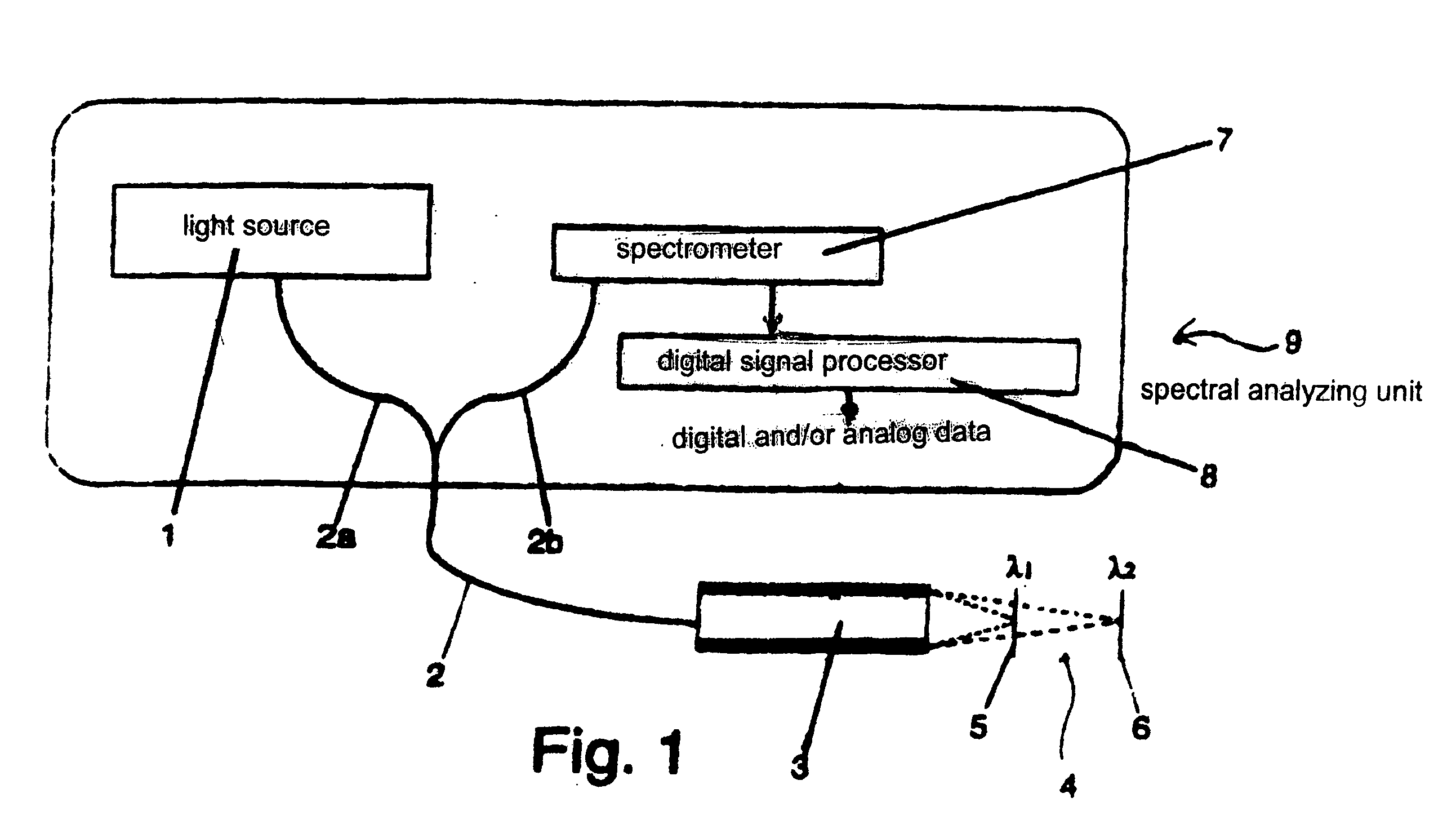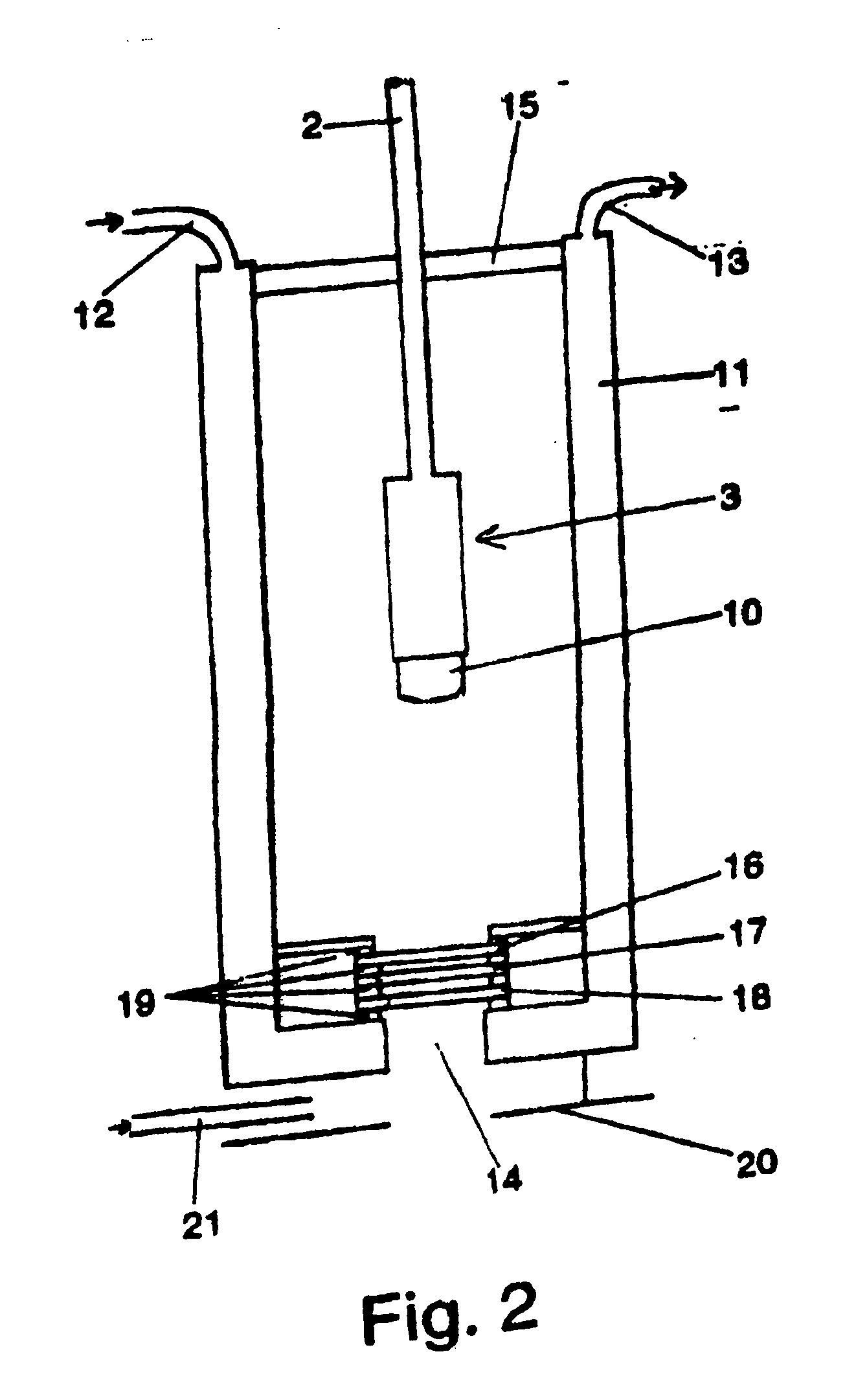Method and apparatus for contactless optical measurement of the thickness of a hot glass body by optical dispersion
a technology of contactless optical measurement and hot glass body, which is applied in the direction of radiation pyrometry, instruments,spectrum investigation, etc., can solve the problems of inability to use ultrasonic measurements, high cost of confocal microscopy coupled with an auto-focus system, etc., and achieve high precision
- Summary
- Abstract
- Description
- Claims
- Application Information
AI Technical Summary
Benefits of technology
Problems solved by technology
Method used
Image
Examples
Embodiment Construction
[0038]FIG. 1 shows a measurement apparatus. Light from a polychromatic light source 1 is conducted by means of the strand 2a of the glass fiber optic cable 2, which comprises the glass fiber strands 2a and 2b, to the focusing device 3. The light propagated from the focusing device falls on the glass body 4, which has a front side 5 and a rear side 6 and which is to be measured. The focusing device 3 focuses light of different wavelengths at different distances from the light outlet. The light of wavelength λ1 is focused on the front side 5 of the glass body 4, while the light of wavelength λ2 is focused on the rear side 6 of the glass body 4. The light reflected from the glass body 4 travels over the strand 2b of the glass fiber optic cable 2 to the spectrometer 7. Since the intensity of the reflected light from the front side 5 is greatest at the wavelength λ1 and the intensity of the reflected light from the rear side 6 is greatest at the wavelength λ2, these wavelengths can be de...
PUM
 Login to View More
Login to View More Abstract
Description
Claims
Application Information
 Login to View More
Login to View More - R&D
- Intellectual Property
- Life Sciences
- Materials
- Tech Scout
- Unparalleled Data Quality
- Higher Quality Content
- 60% Fewer Hallucinations
Browse by: Latest US Patents, China's latest patents, Technical Efficacy Thesaurus, Application Domain, Technology Topic, Popular Technical Reports.
© 2025 PatSnap. All rights reserved.Legal|Privacy policy|Modern Slavery Act Transparency Statement|Sitemap|About US| Contact US: help@patsnap.com



